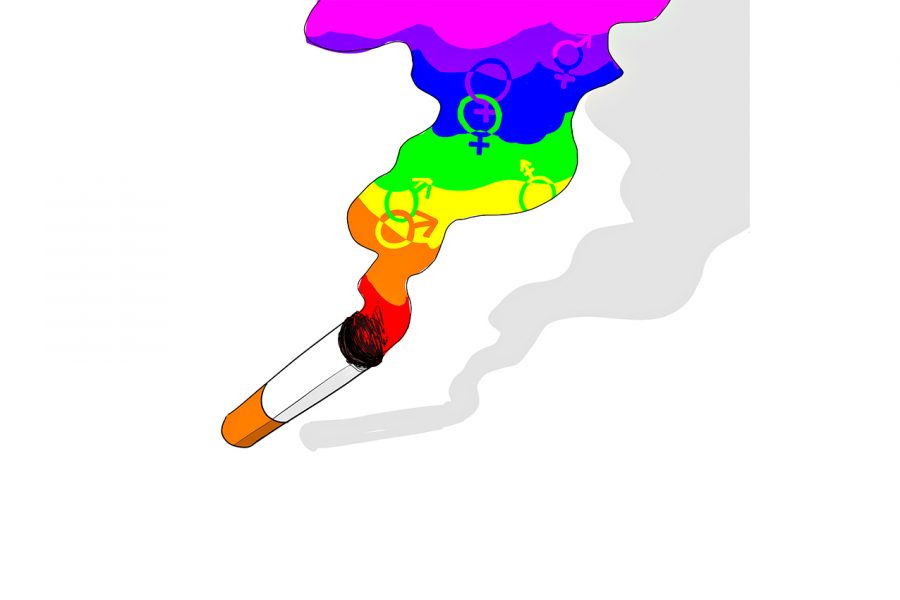LGBTQ youth continue to have a higher risk of tobacco use relative to their heterosexual and cisgender peers, according to an article published this year in the journal Drug and Alcohol Dependence. The likelihood of smoking is up to 2.5 times higher in sexual minorities compared to the relative population, a trend that has persisted since the 1990s, according to the study.
Complex social and interpersonal factors play into what causes this pattern, said Jessica Fish, co-author of the study, former UT postdoctoral researcher and assistant professor at the University of Maryland. However, the overall rates of smoking in youth are declining, she added.
“Put another way, rates (of smoking) among heterosexual youth are declining faster than sexual minority youth, thus increasing the disparities between the two groups,” Fish said. “The good news is that we are still seeing a decline in tobacco use across groups.”
The researchers hypothesized that an increased risk of smoking is associated with a number of social factors, one of which being the stressful event of coming out. Coming out, even in a society where the LGBTQ community is more accepted, can create feelings of isolation, Fish said. Marina Sanchez, a student at the Science Academy of South Texas and member of the LGBTQ community, said she’s experienced feelings of isolation in her everyday life.
“It really depends … if I’m around people I know are bothered by sexual orientation, then I feel isolated,” Sanchez said.
LGBTQ youth are more likely than adults in the community to be current smokers, according to the study.
“The collision of these social, developmental and interpersonal processes occur at a time when youth are most vulnerable to them — and for developing maladaptive coping strategies, such as tobacco use,” Fish said.
Eva Sanchez, a student from Science Academy of South Texas, said she doesn’t smoke because of stress or isolation, but because of social motivations.
“I smoke cause the product is available with the people around me, so it’s free,” Sanchez said. “Also, nicotine is chill.”
The study also found that LGBTQ folks tend to experiment with substance use more often and for longer than their straight counterparts. Fish said the study proves the need for the implementation of anti-substance abuse strategies focused on the LGBTQ community, as even alcohol use can be higher in sexual minorities due to perceptions bars are the only social spaces for them, according to the study.
“We may need to be more proactive in combating this risk via focused prevention and intervention strategies that are focused on the experiences of LGBTQ youth,” Fish said. “We’ve found time and time again that sexual minority youth (have) elevated rates of tobacco use and other substances — it’s really important that we start to consider how to develop and evaluate programs that are specifically designed to address these health inequities.”















